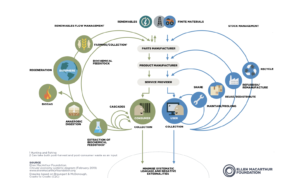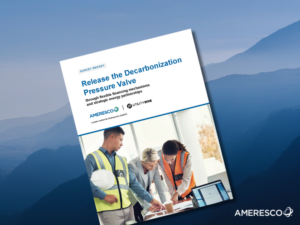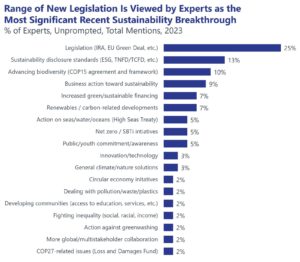
This article is sponsored by Patch.
How many carbon credits do you need to buy?
For maybe as long as the voluntary carbon market has existed, the answer has been intrinsically linked to the measurement of your carbon footprint.
Working backwards from the end goal — a livable planet inside the bounds of 1.5 degrees Celsius — a company can calculate its greenhouse gas emissions in terms of carbon dioxide equivalent (CO2e) tonnes, reduce as much as it can, then purchase credits equal to the number of tonnes remaining — in other words, by “compensating” for the residual carbon footprint.
Obviously, that’s a gross simplification, but it’s precisely because of that simplification that the compensation model runs into issues from a practical perspective for many companies.
In the simplest version of the equation — carbon footprint minus reduction plus credits equals zero — all credits are the same, so any credit will do. It essentially treats credits as commodities. It’s true that carbon credits share some properties of commodities, such as being somewhat interchangeable insofar as a tonne of CO2 emitted is chemically uniform to a tonne removed. However, enough key differences make the equation far more complex.
How carbon differs from traditional commodities
In economics, a commodity is a basic good interchangeable with any other of its same type. They’re not reducible, meaning they can’t be broken down into component parts, and they’re typically an input for a variety of other goods. Corn, soybeans, oil and gold are all examples of commodities.
If you buy a bushel of No. 2 yellow corn, it’s essentially identical to any other bushel of No. 2 yellow corn from anywhere in the world, assuming similar quality and freshness. When the price of some corn goes up, for the most part the price of all corn goes up.
Carbon credits, however, are hardly interchangeable. Each type of project has a highly variable price based on a variety of factors, such as:
- Cost of production: How expensive is it to develop, scale and use the approach?
- Permanence: How long will the carbon be sequestered?
- Location: Where is the project located, and will buyers pay more based on it?
- Co-benefits: Are there added benefits besides the climate impact — such as protecting biodiversity or helping vulnerable populations?
- Risk: Is the project widely trusted by experts and the public?
- Vintage: When does the climate impact occur? It can be in the past, present or future.
And that’s not all. Other scientific or regulatory factors can drive prices up or down. Demand will vary based on awareness and interest in a given project or approach, which can be affected by media cycles and marketing campaigns.
The end result is a voluntary carbon market with vastly different prices for different carbon credits. Novel technologies, such as direct air capture, bio-oil and concrete mineralization, can range in cost from hundreds to thousands of dollars-per-tonne. Forestry credits or sustainable cookstove projects could cost as little as $10 per tonne.
With a limited budget and an eye to compensate for 100 percent of your footprint, many companies are only able to afford the least expensive carbon credits.
Contribution models offer added flexibility
That’s why more sustainability leaders are considering contribution models instead of or in addition to commitments that revolve around compensation based on a total footprint. Contribution simply means investing your climate budget where you’ve determined it can make the greatest impact by contributing to climate projects.
(Read more about these claims in our guide: “5 climate commitments and how to identify yours.”)
Imagine you had a climate budget of $20,000 for the year, and a company CO2 footprint of 1,000 tonnes. Your average price-per-tonne to compensate for those emissions will be $20. That precludes you from contributing dollars towards more cutting-edge projects, such as direct air capture, that desperately need forward investment to reach commercial scale by the 2030s.
What if you weren’t beholden to compensating for 100 percent of those 1,000 tonnes? You could instead allocate your budget towards maximum climate impact. Any project would be available to you.
And just as new technology desperately needs advance funding, our species desperately needs these technologies to scale faster. The latest IPCC report confirms we’ll need carbon removal at a massive scale by 2050 to have a chance to draw back down to 1.5 degrees Celsius of warming versus pre-industrial levels by 2100.
However, there are pros and cons to the contribution approach.
Pros:
- Gives you flexibility to contribute to credits based on impact rather than claim
- Allows you to base your climate action story on innovative approaches
- Unblocks access to cutting-edge carbon credits
Cons:
- Could inhibit companies from making well-known climate claims, such as “carbon neutral” or “net zero”
- Cutting-edge credits tend to be much more expensive than other options, resulting in fewer credits overall being purchased
- There’s a lack of guidance and standards around contribution best practices
Compensation and contribution
The obvious way to enjoy all the “pros” with none of the “cons” would be to adopt both compensation and contribution approaches in your climate spending. In other words, you fulfill the requirements of your compensation-based commitment, then contribute additional funds towards the approaches that will help you maximize your impact and tell your climate action story.
Naturally, the cost will be higher, but all approaches will play a part in averting the worst consequences of climate change, and all need much more funding immediately and into the future. Companies that can make a larger contribution surely ought to do so.
Furthermore, combining compensation and contribution allows you to make a well-diversified portfolio, a crucial part of a high-impact, low-risk climate strategy.
And lastly, it doesn’t lose sight of the reduction aspect of a company’s climate action strategy. A contribution-only approach without measuring and reducing your footprint is missing the most important part: not emitting CO2 in the first place.
At Patch, our mission is to make a livable future inevitable. Our approach to climate action offers the widest selection of carbon credit options, and our huge network of partners can help you implement either your compensation strategy, your contribution strategy — or better yet, both.
- SEO Powered Content & PR Distribution. Get Amplified Today.
- Platoblockchain. Web3 Metaverse Intelligence. Knowledge Amplified. Access Here.
- Minting the Future w Adryenn Ashley. Access Here.
- Source: https://www.greenbiz.com/article/compensation-vs-contribution-comparing-climate-spending-models
- :is
- $UP
- 000
- 1
- 100
- a
- Able
- About
- access
- Action
- added
- addition
- Additional
- adopt
- advance
- AIR
- All
- allows
- and
- answer
- anywhere
- approach
- approaches
- ARE
- around
- article
- AS
- aspect
- At
- available
- average
- awareness
- back
- base
- based
- basic
- BE
- because
- being
- benefits
- BEST
- Better
- Broken
- budget
- buy
- buyers
- by
- calculate
- Campaigns
- CAN
- capture
- carbon
- carbon credits
- carbon dioxide
- carbon footprint
- Celsius
- Chance
- change
- claims
- Climate
- climate action
- Climate change
- co2
- combining
- commercial
- commitment
- Commodities
- commodity
- Companies
- company
- Company’s
- comparing
- Compensation
- complex
- component
- Cons
- Consequences
- considering
- contribute
- contributing
- contribution
- Cost
- could
- credit
- Credits
- crucial
- cutting-edge
- cycles
- Demand
- determined
- develop
- differences
- different
- direct
- Doesn’t
- dollars
- down
- drive
- each
- Economics
- either
- Emissions
- enjoy
- enough
- Equals
- Equivalent
- essentially
- Ether (ETH)
- examples
- expensive
- experts
- eye
- factors
- faster
- First
- Flexibility
- Footprint
- For
- Forward
- from
- Fulfill
- funding
- funds
- future
- GAS
- given
- goal
- Goes
- Gold
- good
- goods
- greatest
- greenhouse gas
- Greenhouse gas emissions
- gross
- guidance
- guide
- Have
- help
- helping
- higher
- highly
- How
- How To
- However
- HTTPS
- huge
- Hundreds
- identical
- identify
- immediately
- Impact
- implement
- important
- in
- In other
- inevitable
- innovative
- input
- instead
- interest
- intrinsically
- investing
- investment
- issues
- IT
- ITS
- jpg
- Key
- Lack
- larger
- latest
- leaders
- levels
- Limited
- linked
- little
- located
- Long
- lose
- low-risk
- make
- Making
- many
- Market
- Marketing
- Marketing Campaigns
- massive
- Maximize
- maximum
- meaning
- means
- measuring
- Media
- missing
- Mission
- model
- models
- more
- most
- Need
- needs
- net
- network
- Neutral
- New
- novel
- number
- obvious
- of
- offer
- Offers
- Oil
- on
- Options
- Other
- overall
- part
- partners
- parts
- past
- Patch
- Pay
- percent
- perspective
- Place
- planet
- plato
- Plato Data Intelligence
- PlatoData
- Play
- plus
- populations
- portfolio
- Practical
- precisely
- present
- price
- Prices
- Production
- project
- projects
- properties
- PROS
- protecting
- public
- purchase
- quality
- range
- rather
- reach
- Read
- reduce
- reducing
- regulatory
- remaining
- removal
- Removed
- report
- Requirements
- result
- resulting
- same
- Scale
- selection
- Share
- Sight
- similar
- simply
- So
- some
- somewhat
- Spending
- Sponsored
- standards
- Story
- Strategy
- such
- surely
- Sustainability
- sustainable
- Technologies
- Technology
- terms
- that
- The
- The Future
- the world
- These
- thousands
- to
- Total
- towards
- traditional
- treats
- true
- trusted
- typically
- use
- variety
- version
- Versus
- vs
- Vulnerable
- Way..
- well-diversified
- well-known
- which
- widely
- will
- with
- without
- words
- world
- Worst
- would
- year
- Your
- zephyrnet
- zero








